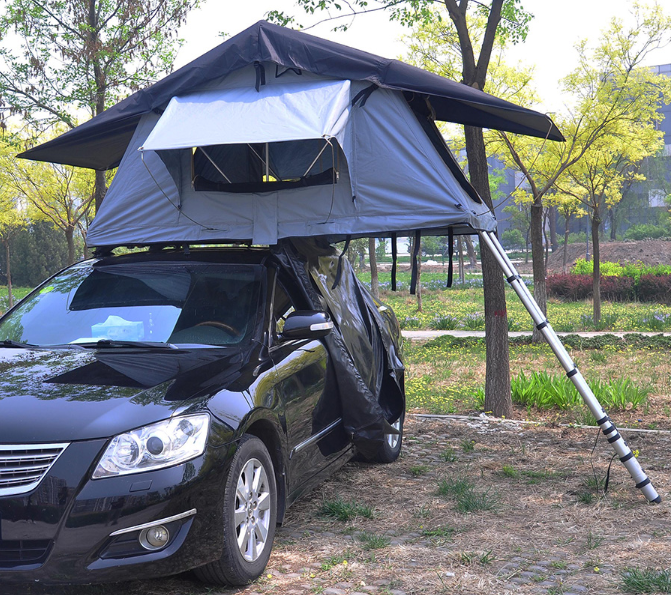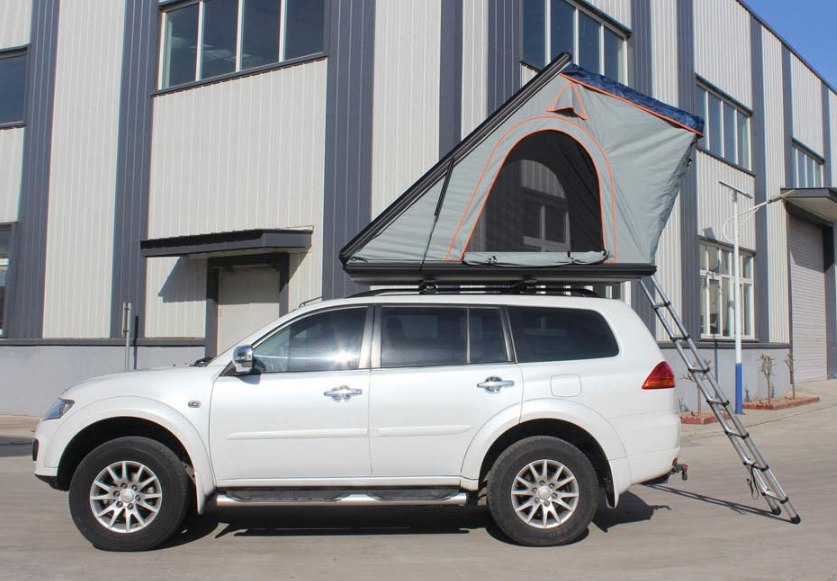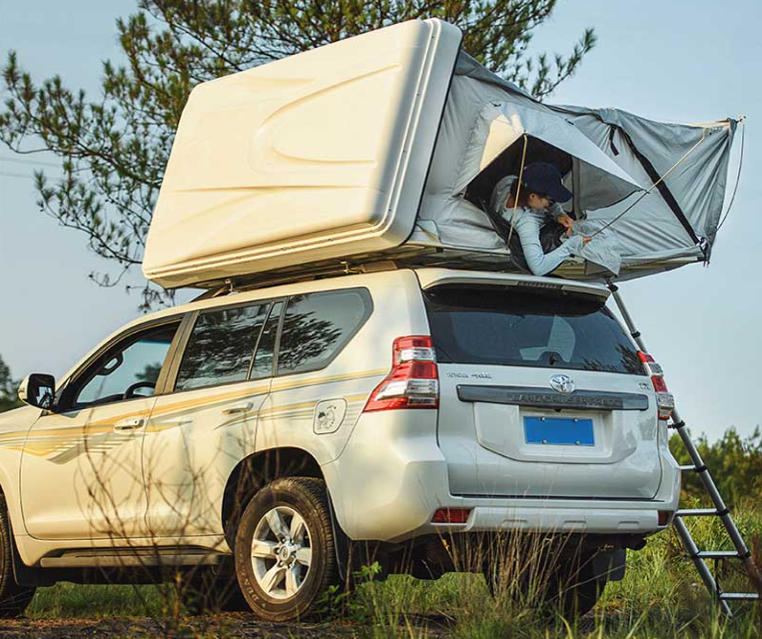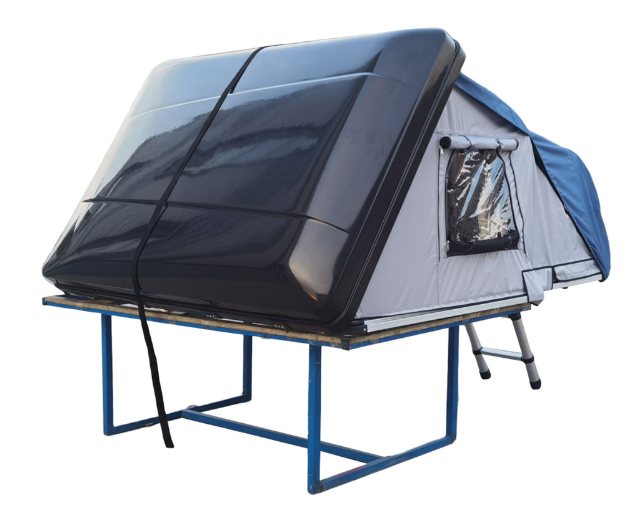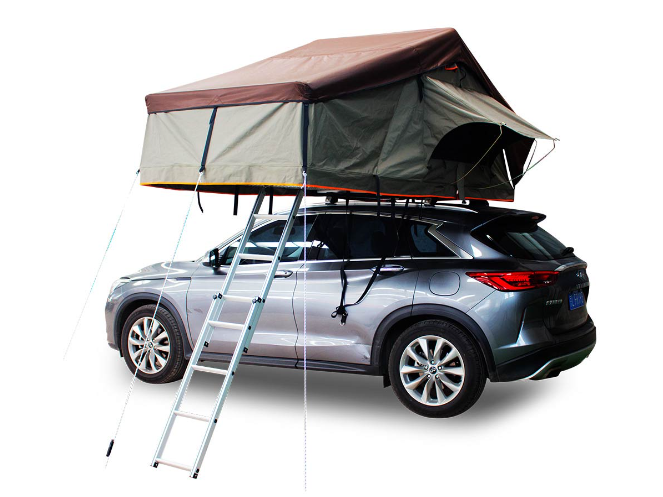WHAT IS A ROOF TOP TENT
A 4 person rooftop tent is a type of camping tent designed to be mounted on the roof of a vehicle, such as a car, SUV, or truck. Essentially, it's a tent positioned atop a vehicle, offering various advantages in terms of comfort, safety, travel flexibility, and convenience.
Rooftop tents are available in different sizes and designs, ranging from basic setups for two people to larger, more luxurious options featuring ladders, hard shells, and annexes for extra living space. Some models also include additional features like built-in mattresses, windows, and awnings.
However, it's crucial to note that not all vehicles can support the weight of a rooftop tent, especially when factoring in the weight of the occupants. Always check the weight capacity of your vehicle's roof and the weight of the tent you're considering before installation.
Advantages of Rooftop Tents
4 person rooftop tents offer several advantages, especially for enthusiasts of regular camping or road-tripping:
1. Comfort: Positioned above the ground, rooftop tents often provide a flatter and more comfortable sleeping surface compared to traditional tents, especially on rugged or uneven terrain. Many rooftop tents are equipped with built-in mattresses for enhanced comfort.
2. Protection: Being elevated provides an additional layer of protection against ground-dwelling insects, reptiles, or larger wildlife.
3. Easy Setup and Takedown: Many rooftop tents are designed for quick and effortless setup and takedown, often achievable by a single person. This convenience is particularly beneficial when frequently changing locations or arriving late at a campsite.
4. Versatility: Because the tent is affixed to your vehicle, you can camp in nearly any legal parking spot, expanding your options compared to traditional tents. Moreover, if your tent is mounted on a truck or a vehicle with high clearance, you can access areas that vans may struggle to reach.
5. Space Efficiency: Rooftop tents enable you to maximize the space on your vehicle's roof, freeing up interior space for additional gear or supplies. This leaves the campsite area around your vehicle available for other activities.
6. View: Depending on your camping location, the elevated position of a rooftop tent can offer outstanding views. Additionally, it can provide a sense of privacy, especially when camping in crowded areas.
7. Durability: Rooftop tents are typically constructed from sturdier materials compared to traditional tents. This enhances their resistance to harsh weather conditions and extends their lifespan.
8. Cleanliness: Being elevated decreases the chances of tracking dirt or sand into your tent, as often occurs with ground tents.
Drawbacks of Rooftop Tents
While rooftop tents offer an exciting and convenient camping option, there are several potential downsides to consider, especially when camping with children and pets:
1. Cost: Rooftop tents can be quite expensive, often costing thousands of dollars depending on the brand and size. This significant cost difference compared to ground tents, which can be as inexpensive as $100, may be a deterrent for some campers. However, when compared to trailers or camper vans, rooftop tents are generally more affordable.
2. Access: Entering and exiting a rooftop tent typically requires climbing a ladder, which can be challenging for young children and pets. It may also necessitate multiple trips up and down the ladder to accommodate everyone and everything, potentially causing inconvenience.
3. Safety: Young children may require supervision to prevent falls while climbing up or down from the tent or while inside it.
4. Bathroom Breaks: Navigating the ladder in the dark can be challenging for kids needing a nighttime bathroom break or for a dog needing to go outside.
5. Space: Despite coming in various sizes, rooftop tents are generally less spacious than traditional ground tents. For families with multiple children and a dog, it may feel cramped.
6. Weight Limitations: Rooftop tents have weight limits for both the tent itself and the vehicle's roof rack. It's essential to ensure that the combined weight of the tent, occupants, and gear stays within these limits.
7. Temperature Control: Rooftop tents can become quite warm during summer months due to direct sunlight exposure, which might be uncomfortable for children or pets during the day.
8. Restrictions: If you want to leave your campsite to go hiking or dine out, you need to collapse your tent to drive. Additionally, some campsites or parks may have restrictions on rooftop tents, so it's important to check the rules and regulations beforehand.
WHY CHOOSE A 4-PERSON ROOFTOP TENT FOR YOUR FAMILY
While there are some downsides to a rooftop tent, the pros outweigh the cons. The main reason for choosing a family rooftop tent over a pop-up camper is its suitability for frequent short camping trips. If you enjoy quick overnight trips with friends and kids, a rooftop tent is ideal.
Once mounted on your truck, the rooftop tent allows you to go off-roading and reach campsites that a camper van or trailer couldn't access. Being elevated off the ground provides safety from wildlife.
The setup and takedown process is much quicker since there are no tent poles to assemble or sleeping pads to inflate and deflate. You can easily set it up on your own, which is convenient for trips with the kids.
Everyone fits relatively comfortably in the 4-person tent. While it isn't as spacious as an 8-person tent, it is comfortable, and the kids enjoy sleeping close to you.
